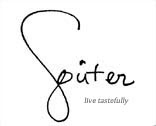
When I was in fourth grade, some weasel of a boy told me the following joke:
Why don't women need to wear watches? Because there's a clock on the stove.
I remember that what mortified me was not the blatant sexism of the joke told by this twelve-year-old-twit, but rather that I didn't get it. In my world, stoves didn't have clocks. My mother's stove was a gas range, and gas ranges don't have clocks because the heat from the fire burners is far too strong for electronics.
Kind of like a woman in the kitchen.
New York Magazine recently ran a feature called "A Woman's Place" about the difficulties of being a professional woman chef in New York City. It was in the form of a group-style interview with seven of the city's most prominent female chefs: "April Bloomfield (The Spotted Pig), Rebecca Charles (Pearl Oyster Bar), Alex Guarnaschelli (Butter), Sara Jenkins (formerly of 50 Carmine), Anita Lo (Annisa), Jody Williams (Morandi), and Patricia Yeo (formerly of Monkey Bar and Sapa)."
I've had the pleasure of tasting the savory warmth of gnudi at Spotted Pig melt on my tongue and of indulging in the buttery toastiness of the Lobster roll at Pearl... So brava, ladies, brava.
Like the article says, historically women have been the rulers of kitchen in the domestic sphere. And then -- like any good export of the the sexism capital of the Western world -- France showed that great chefs, male, were fit to cook for the king.
Female chefs in recent history tend to carry the weight of domesticity: Julia Child, Martha Stewart, TV chefs like Giada DeLaurentiis and Ina Garten, even Alice Walker might be considered more of a domestic than, say, Ferrán Adria (who is certainly more of a chemist than anything else...test tubes... really...). The sex appeal of these women is that they make food that reminds you of home, that somehow appeals to Oedipal mother-love. Giada and Nigella Lawson are babes, and (or because?) they cook and look great doing it. "How to be a Domestic Goddess," anyone?
I find these women brave, and I truly admire the less conspicuous chefs who command the hot strips of New York's most competitive kitchens. Perhaps the professional restaurant kitchen is one of the last openly sexist places of work, where testosterone-laden competition makes it difficult -- if not impossible -- for a woman to truly succeed in the restaurant world.
This is ironic, considering that the role reverses in the domestic sphere. If ever my father tried to cross my mother in Her Kitchen, it was tantamount offense to a Yankee crossing the Mason-Dixon line. It just wasn't done, and the consequences were dire. I witnessed explosions throughout my years at home when we crossed the line to assist with a meal. Timing was everything, and if we ever challenged the "rate-limiting factor" of a dish, we were toast, broiled, boiled over and put back on the spit for another go-around in the fire. I'd like to see Gordon Ramsay take my mother on, because I know that my mother commands Her Kitchen so well that even Ramsay would shy away, muttering defeated curses under his hushed and humiliated breath.
So for a woman to succeed in a kitchen, she's got to be a fireball. Sexy, powerful, unafraid of getting burned or cut or splattered by fat frying in a pan. And then she must also be able to fight the other fires of competition with the ultimate Alpha Male: He Who Cooks and is Still a Man's Man. The male chef has the ultimate sex-appeal. So no matter how you slice it, men once again get the one up on women... or do they?
I have daily dreams of abandoning all of my financial responsibilities and becoming a sous-chef to sweat it out under the guidance of an older, wiser Chef de Cuisine. I do the private, at-home-chef thing for the Nanny Family, and that's a cakewalk. I've done dinner parties, wine tastings, Italian family holidays, cooking one-on-one for my father when my mother was away. This doesn't really constitute a resume, but let's look at the details a moment:
Thanksgiving, 2005. Paris. First Thanksgiving on my own. Galley kitchen, 4ft by 6ft with a narrow walking space. 1.5ft by 2ft working space. The menu: Turkey roulade with wild mushrooms, pinenuts herbs and cheese (I can't remember what kind of cheese), peppers and zucchini stuffed with roasted winter vegetables and homemade breadcrumbs, honey-glazed carrots with mint, more vegetables I can't remember, plus amuse bouches galore and roasted peaches for dessert. Served for 21 people, prepared from scratch, in seven-straight hours of sweaty, back-breaking work (see photo above). I wanted fresh ingredients from the market, so in my ambition, I prepared the meal in one, single day. By the end of that night (3am), I was more possessed than Lady Macbeth -- and I couldn't eat a damn thing I made. I lost my appetite completely. But everyone said it was great.
Yet that was at home, in my domestic little French kitchen. I wasn't on the line, I wasn't handling multiple requests for multiple diners with multiplicitous tastes. It was my menu for my guests and they were having the menu that I created myself. So perhaps my first Thanksgiving wasn't that impressive after all -- perhaps it doesn't qualify me for a job in a professional kitchen.
So what's the alternative for women who aspire to cook professionally? A pastry chef? Ovens are hot (I've a scars to prove it), but they cook slowly. It's not like a gas, full-range stove with all six burners going at once and pans flying everywhere. Go to Casa Mono and sit at the bar while you have your tapas and Rioja -- you'll see what I mean. Fire is sexy. So ladies, keep cooking with fire. And move. Quickly.



